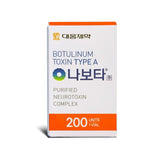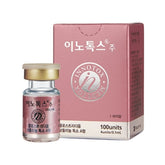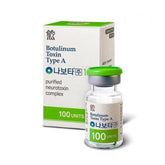Numbing Cream - A Patient's Guide to Comfortable Treatments

Numbing Cream - A Patient's Guide to Comfortable Treatments. For many patients, the anticipation of discomfort during medical and cosmetic procedures can be daunting. Numbing cream has emerged as a vital ally in alleviating this anxiety, offering a way to undergo various treatments with significantly reduced pain. This comprehensive patient's guide illuminates the benefits and proper usage of numbing cream, ensuring comfort and ease during your next procedure.
A patient's guide to Numbing Cream: What is Numbing Cream?
Numbing cream, also known as a topical anesthetic, is a medicated product applied to the skin to minimize sensations of pain. These creams usually contain active ingredients like lidocaine, prilocaine, benzocaine, or tetracaine, which block nerve signals in the skin, leading to temporary numbness of the treatment area.
When to Use Numbing Cream
Numbing creams are versatile and can be used for a variety of treatments, including:
- Dermatological Procedures: Laser hair removal, tattooing, and microneedling.
- Medical Interventions: Minor surgeries, IV insertions, and injections.
- Cosmetic Enhancements: Dermal fillers, Botox, and other injectable treatments.
A patient's guide to Numbing Cream: Choosing the Right Numbing Cream
Consult Your Provider:
Before selecting a numbing cream, discuss options with your healthcare provider, especially if you have sensitive skin or allergies.
Consider the Procedure:
Different treatments may require varying strengths of numbing cream. Your provider can recommend a product with the appropriate concentration.
Preparing for Application
Read Instructions Carefully:
Each numbing cream comes with specific guidelines regarding application and duration. Follow these meticulously to ensure effectiveness and safety.
Clean the Area:
Before applying numbing cream, clean the area with mild soap and water to remove oils and debris that could hinder absorption.
A patient's guide to Numbing Cream: Applying Numbing Cream Correctly
Apply as Directed:
Use only the amount of cream directed and apply it evenly over the treatment area. Avoid spreading it beyond the area to be treated.
Cover the Cream:
Some procedures may require covering the cream with a plastic wrap to enhance absorption. Check with your provider if this step is necessary for your treatment.
During the Procedure
Inform Your Practitioner:
Always let the practitioner know you've applied numbing cream and where it has been applied.
Time It Right:
Numbing creams generally take between 30 minutes to one hour to take effect. Timing your application so that it coincides with your procedure is crucial for optimal numbness.
Side Effects and Precautions
Be Aware of Reactions:
While side effects are rare, it's possible to have reactions to numbing cream. Signs include redness, itching, and swelling. If you experience any adverse reactions, inform your healthcare provider immediately.
Avoid Overuse:
Using too much numbing cream, or applying it over a large area, can lead to systemic absorption and more serious side effects.
A patient's guide to Numbing Cream: Aftercare and Observations
Skin Monitoring:
After the procedure, monitor the skin for any prolonged numbness or irritation. If numbness persists beyond the expected duration, consult your healthcare provider.
Remove Excess Cream:
Use a gentle cloth to remove any remaining cream from the skin after your procedure, following up with a wash of the area if recommended by your provider.
The Role of Numbing Cream in Different Treatments
Cosmetic Procedures:
In procedures like microneedling or injectable fillers, numbing cream can transform an uncomfortable experience into a tolerable one.
Medical Procedures:
For minor surgical procedures, numbing cream can reduce the need for more potent anesthesia, leading to quicker recovery times.
Making the Most of Your Treatment with Numbing Cream
Early Preparation:
Plan ahead to ensure you have enough time for the numbing cream to take effect before your procedure begins.
Quality Products:
Invest in a high-quality numbing cream to maximize comfort and minimize potential side effects.
Numbing Cream and Children
Special Considerations:
When considering numbing cream for children, it's essential to seek pediatric advice, as their skin is more sensitive and may absorb medications differently.
Numbing cream is a game-changer for patients who fear pain associated with certain procedures. By following this guide to using numbing cream safely and effectively, you can face your next treatment with confidence, knowing that comfort is within reach. As with any medical product, communication with your healthcare provider, adherence to guidelines, and attentiveness to your body's reactions are paramount in ensuring a positive and comfortable experience.





